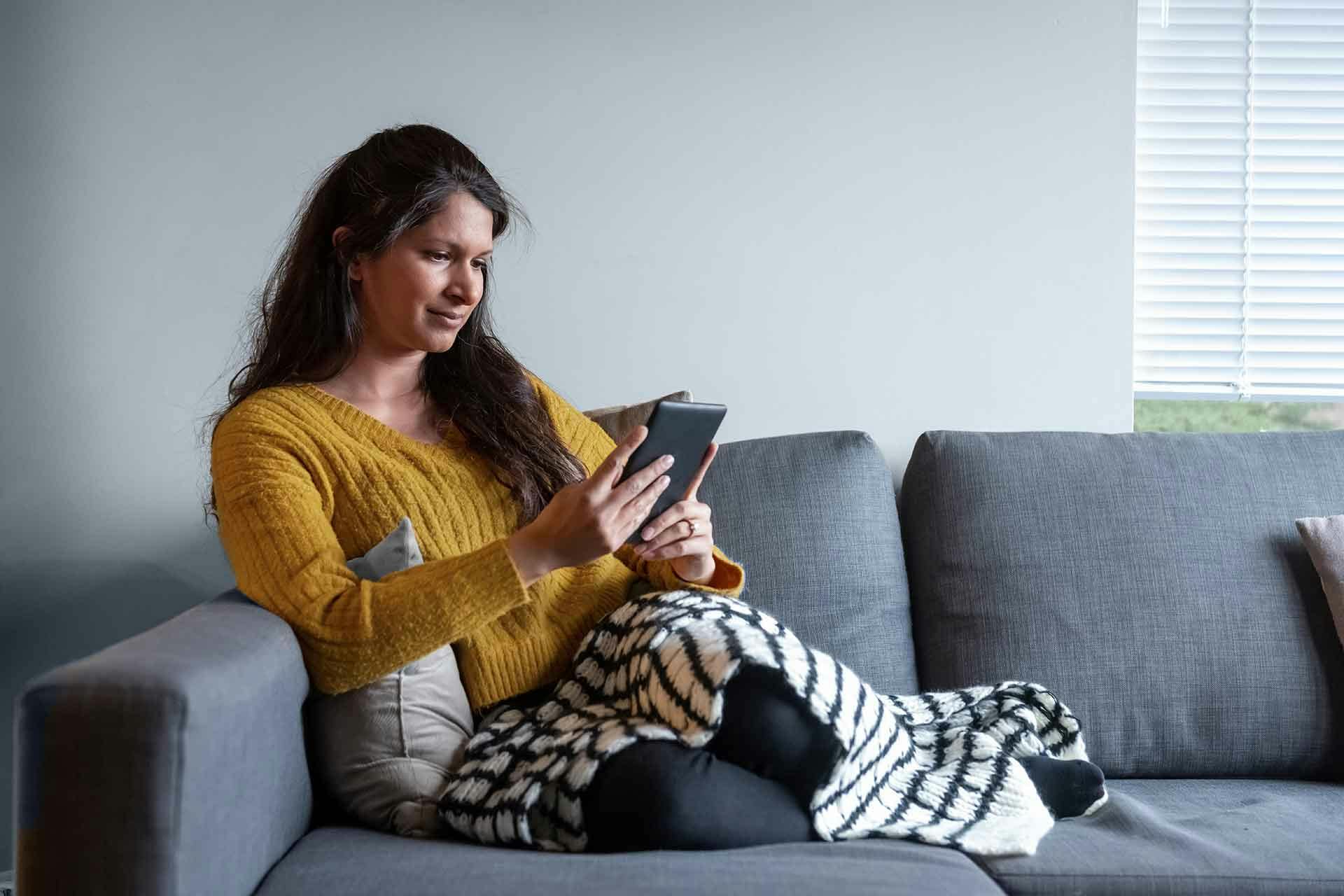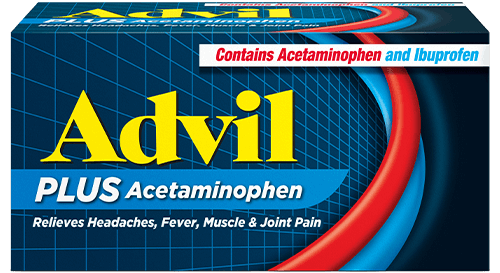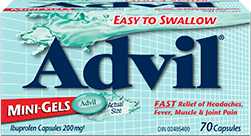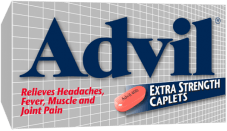A Guide To Treating Migraines
Read about traditional and non-traditional treatments for migraines

No two migraine attacks are the same. Often, a mix of traditional and non-traditional treatments is the best way to cope with and prevent an attack. But that can also mean some trial and error before the relief.
After you have experienced a few migraines, take some time to evaluate your approach. If you are not getting the relief you need, keep working with your doctor and other health care practitioners to find the best course of treatment for you. Don’t forget to keep track of any treatments or therapies you try in your migraine diary.
Over-the-Counter Medications
OTC nonsteroidal anti-inflammatory drugs (NSAIDs) are commonly used pain relievers for headaches and migraines, partly because of their easy availability and lower cost, but also because they can be very effective in mild to moderate attacks. They include ibuprofen like fast-acting Advil® Liqui-Gels®, aspirin, diclofenac, or naproxen.
Migraine diaries can help you recognize the signs and symptoms of a migraine and what treatment options may work best for you.
Prescription Medications
- Triptans are commonly prescribed migraine medications. They are sometimes prescribed to increase serotonin levels. They are not recommended for people with high blood pressure or heart disease and may interact with other medications.
- Ergotamine, in the form of tablets, nasal sprays, suppositories or injections, can provide immediate pain relief. It is usually only prescribed to people with infrequent or brief attacks. Ergotamine can have a variety of side effects, interact negatively with other drugs, and is toxic in high doses.
- Anti-nausea drugs are prescribed to reduce nausea and vomiting that can accompany migraines. They don’t reduce migraine pain and are often taken along with a painkiller.
A mix of traditional and non-traditional treatments are often the best way to cope with an attack.
Natural and Alternative Therapies
Medication is a proven way of treating migraines, however there are other things you can do to give your body the best chance for keeping symptoms and pain at bay. The following preventative treatments can be a complement to your regular medical therapy. As always, talk to your doctor first, and keep records in your migraine diary.
Dietary Supplements
Readily available, more affordable, and with fewer side effects than some medications, supplements are being used more and more to help prevent migraines. Here are some that have been found to be helpful.
- Coenzyme Q10, when taken with other preventive medication, has been shown to be effective in reducing both the severity and the frequency of migraine attacks.
- Riboflavin (vitamin B2) can reduce the pain associated with migraine, as well as frequency of attacks. Research suggests it acts as a neuroprotective agent safeguarding brain function and structure.
- Magnesium is a mineral that plays a key role in body functions, including metabolism and blood pressure. A deficiency has been linked to migraines, with some studies suggesting that taking a supplement or eating foods high in magnesium, like eggs, spinach, almonds and oatmeal may help reduce or even prevent symptoms and pain.
- Melatonin is a hormone produced by your pineal gland that regulates sleeps. Low levels have been linked to migraines, with some research showing that taking a melatonin supplement was effective in reducing the number of headache days per month in subjects.
Massage
Regular massages may help reduce stress – a common migraine trigger – and muscle tension, improve sleep, and reduce migraine frequency. Research has also shown it to help decrease heart rate, anxiety, and cortisol (the stress hormone) levels.
Acupuncture
This form of alternative medicine involves the insertion of very thin needles into specific points of the body to balance energy flow. Some studies have shown it to reduce the frequency and intensity of migraines without aura. More research is needed, but for people who want to explore nonpharmaceutical treatments for migraine, it may be worth a try. You should consult a doctor first and keep up with your other treatments as well.
Studies suggest lower stress levels lessen the pain of migraines.
Yoga
Yoga is a series of body postures incorporating breathing and meditation in its practice. It is believed to help with anxiety, release tension and promote overall well-being. Though it hasn’t been proven as a primary treatment for migraines, research has shown yoga to be a beneficial, complimentary therapy, which could result in fewer and less severe attacks.
Biofeedback
Biofeedback is a relaxation method that uses a monitor to train you how to recognize and control muscle tension in your body. It is especially helpful for migraines brought on by physical reactions to stress such as muscle tension and can provide relief similar to medications.
Progressive muscle relaxation
This relaxation technique involves tensing and relaxing muscles throughout different parts of your body. It may take some practice, but this technique can help you better handle stress, thus reducing the power of this common migraine trigger.
Meditation
Mindful meditation is being explored more and more as a way of relieving stress and pain. Research shows that people who meditate daily have lower stress levels and fewer headaches than those who don’t. Studies also suggest it lessens the pain of migraines and may even increase overall pain tolerance.
For more information about migraines, go to the migraine section on our website.
Sources:
- Annette McDermott. “10 Natural Remedies for Migraines.” Healthline, Healthline Media, www.healthline.com/health/natural-ways-to-reduce-migraines#6. Medically reviewed by Deborah Weatherspoon, PhD, RN, CRNA on April 24, 2017
- “10 Tips To Get Rid of A Headache Quickly without Medicine.” WebMD, WebMD, www.webmd.com/migraines-headaches/5-ways-to-get-rid-of-headache#1. Reviewed by Melinda Ratini, DO, MS on May 21, 2018
- “14 Non-Drug Treatments for Migraines With Pictures.” WebMD, WebMD, www.webmd.com/migraines-headaches/common-headaches-17/migraine/slideshow-nondrug-migraine-relief. Reviewed by Neha Pathak, MD on November 03, 2017
- Marcus Clarke. “5 Research Backed Reasons to Take B2 for Migraine.” Migraine Again, 18 Apr. 2018, www.migraineagain.com/take-b2-for-migraine/.
- “Adapting to Life with Migraine.” American Migraine Foundation, American Migraine Foundation, 17 Aug. 2017, www.americanmigrainefoundation.org/resource-library/understanding-migraineadapting-to-life-with-migraine/.
- Cohut, Maria. “Five Ways to Cope with Migraine.” Medical News Today, MediLexicon International, 25 Aug. 2017, www.medicalnewstoday.com/articles/319147.php.
- Cristol, Hope. “How to Restart Your Meds After a Migraine Relapse.” WebMD, WebMD, www.webmd.com/migraines-headaches/migraine-prep-19/treat-migraine-remission. Reviewed by Lawrence C. Newman, MD on January 09, 2019
- Fuhr, Lizzie. “Women's Health 101: How to Handle a Migraine.” POPSUGAR Fitness, POPSUGAR, 2 Nov. 2012, www.popsugar.com/fitness/How-Handle-Migraine-25710507.
- Healthline Editorial Team. “Migraine Drugs: Migraine Medications, Imitrex, Ergomar, Migranal.” Healthline, Healthline Media, www.healthline.com/health/migraine-drugs#painkillers. Medically reviewed by Dena Westphalen, PharmD on October 4, 2018
- “Migraine Treatment Video on the Truth About Home Remedies.” WebMD, WebMD, www.webmd.com/migraines-headaches/migraine-prep-19/video-migraines-truth-about-home-remedies.
- “Migraines Pictures: What Aura Looks Like, Tracking Triggers, and More.” WebMD, WebMD, www.webmd.com/migraines-headaches/ss/slideshow-migraine-overview. Reviewed by Stephen D. Silberstein, MD on August 09, 2017
- Pardutz, Arpad, and Jean Schoenen. “NSAIDs in the Acute Treatment of Migraine: A Review of Clinical and Experimental Data.” Pharmaceuticals (Basel, Switzerland), MDPI, 17 June 2010, www.ncbi.nlm.nih.gov/pmc/articles/PMC4033962/.
- Linda White. “Treating Migraine with Meditation.” American Migraine Foundation, 9 Dec. 2017, www.americanmigrainefoundation.org/resource-library/spotlight-treating-migraine-meditation/.
Be sure this product is right for you. Always read and follow the directions on the label. This information is provided for educational purposes only and should not be used as a substitute for professional medical advice, diagnosis, or treatment. Speak to your healthcare professional before making any changes to your lifestyle or before beginning or discontinuing any course of treatment. Never disregard professional medical advice or delay in seeking it because of something you have read on this site.





